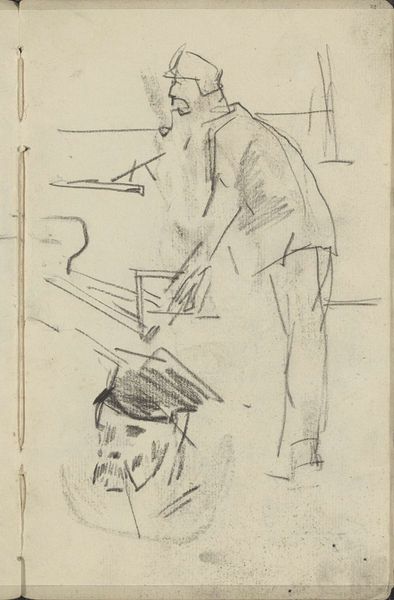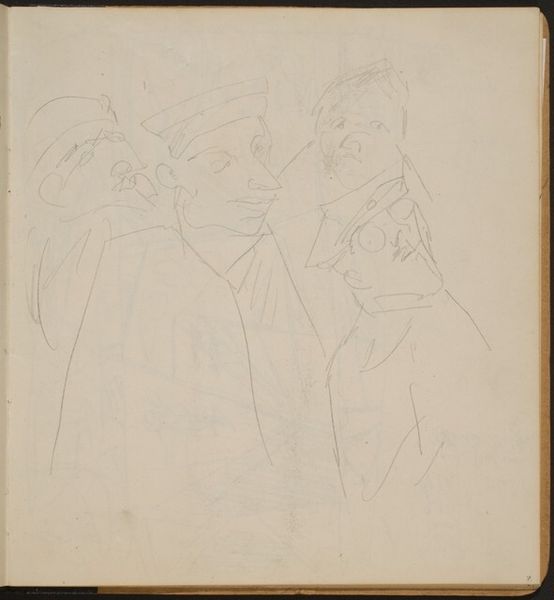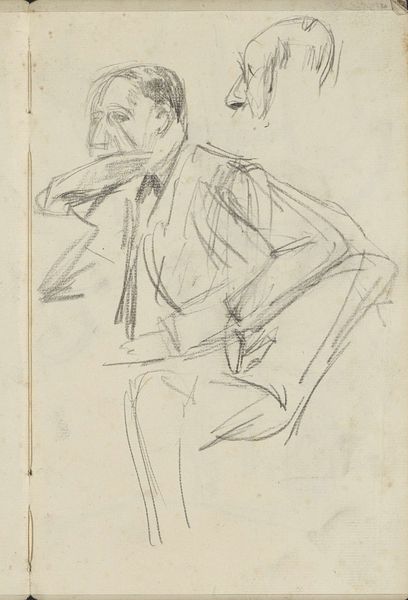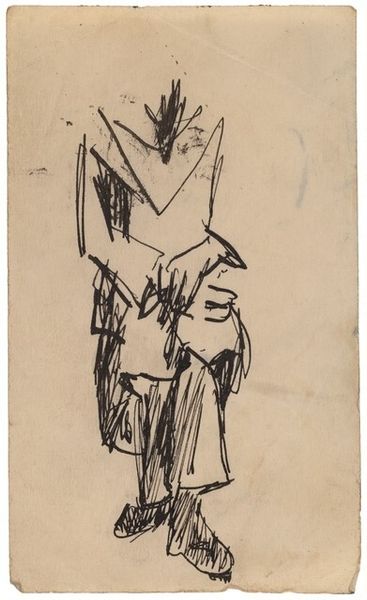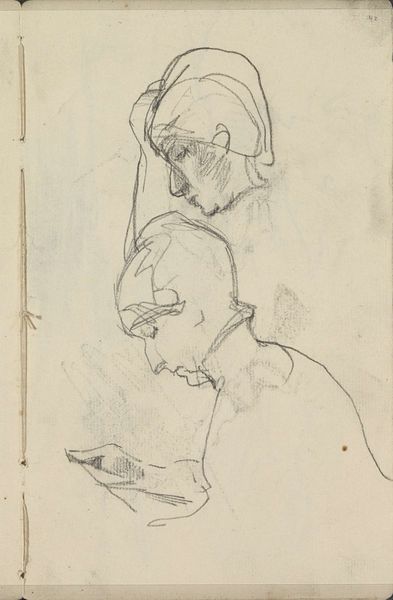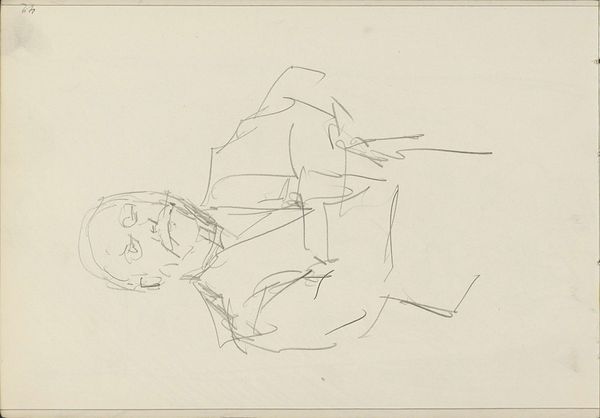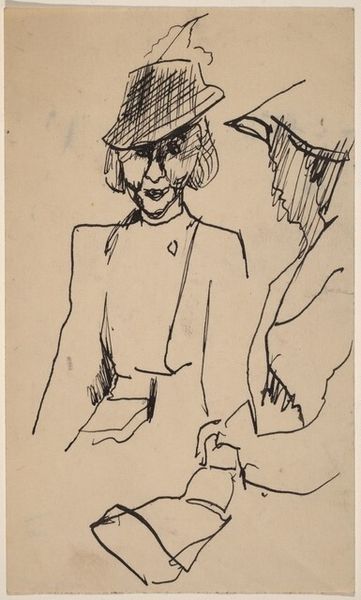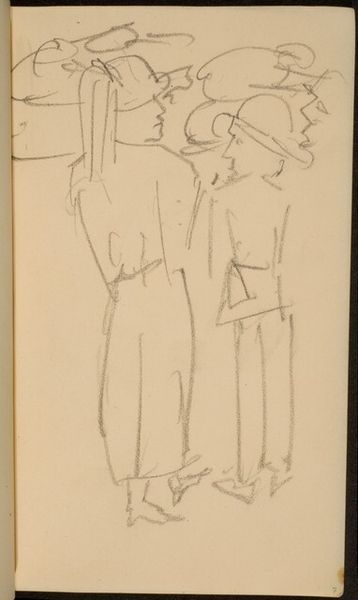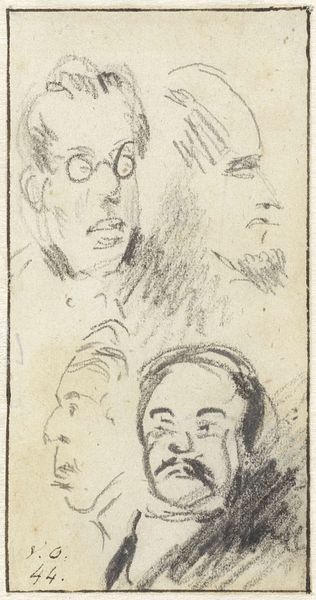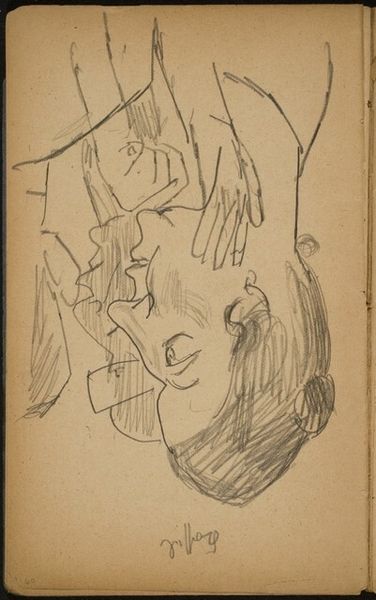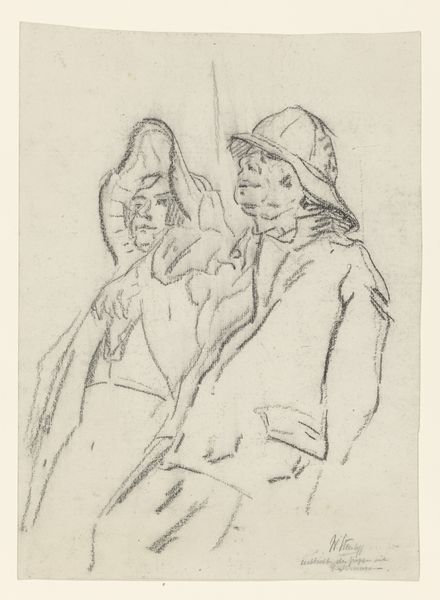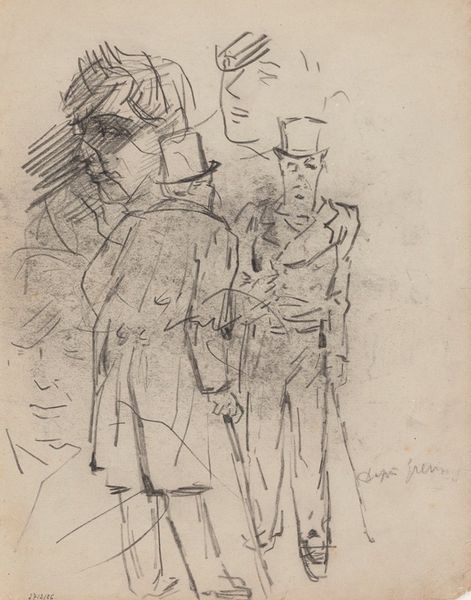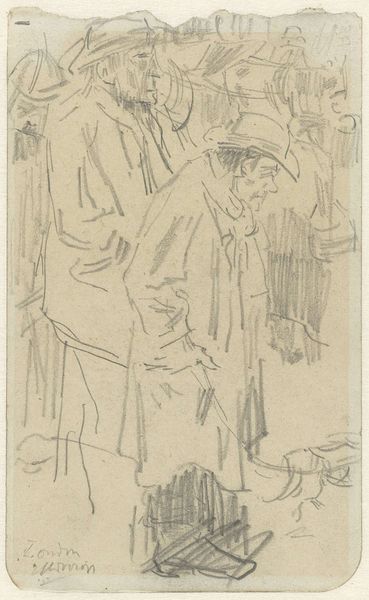![Mann mit Kappe in zwei Ansichten (Two Views of a Man with a Cap) [p. 25] by Max Beckmann](/_next/image?url=https%3A%2F%2Fd2w8kbdekdi1gv.cloudfront.net%2FeyJidWNrZXQiOiAiYXJ0ZXJhLWltYWdlcy1idWNrZXQiLCAia2V5IjogImFydHdvcmtzLzYxM2U5MDY1LWQ5YTgtNGU2Yi1iMjM2LWRjNWQzNDE3ZjI5Zi82MTNlOTA2NS1kOWE4LTRlNmItYjIzNi1kYzVkMzQxN2YyOWZfZnVsbC5qcGciLCAiZWRpdHMiOiB7InJlc2l6ZSI6IHsid2lkdGgiOiAxOTIwLCAiaGVpZ2h0IjogMTkyMCwgImZpdCI6ICJpbnNpZGUifX19&w=828&q=75)
Mann mit Kappe in zwei Ansichten (Two Views of a Man with a Cap) [p. 25] 1927
0:00
0:00
drawing, graphite
#
portrait
#
drawing
#
self-portrait
#
german-expressionism
#
figuration
#
graphite
Dimensions: page size: 17 x 11.8 cm (6 11/16 x 4 5/8 in.)
Copyright: National Gallery of Art: CC0 1.0
Editor: This is "Mann mit Kappe in zwei Ansichten," or "Two Views of a Man with a Cap," a graphite drawing by Max Beckmann from 1927. I'm struck by how stark and almost haunting these two portraits are. How do you read the expressions captured here? Curator: I see a powerful reflection of the anxieties prevalent in Weimar Germany. Beckmann, positioned within the German Expressionist movement, uses portraiture to explore the psychological states of individuals caught in sociopolitical turmoil. These aren't simply depictions; they're interrogations of identity and power during a fractured era. Do you notice the deliberate distortions? Editor: Yes, especially around the eyes and the set of the jaw in both sketches. There's almost a caricature-like quality to it. Curator: Precisely. Beckmann amplifies certain features to critique bourgeois society. He highlights a certain… unease. What could that unease signify considering the rise of nationalism at the time? Perhaps these portraits invite us to consider how men perform masculinity and authority, or, conversely, how they struggle under the weight of those expectations. The cap, itself, can be read as a marker of class, or a gesture of rebellion. Editor: That makes me think about the concept of the "New Man" in the Weimar Republic, and how fraught that ideal was. A kind of reconstructed identity. Curator: Exactly! How might historical trauma impact an individual's self-perception and presentation? Beckmann urges us to look beyond the surface and consider the unseen wounds of his subjects and society, opening crucial conversations about power, identity, and collective anxiety. Editor: I see the drawing in a completely different light now! It's less about portraiture and more about cultural commentary. Curator: That's the beauty of engaging with art: continually re-evaluating our perceptions and understandings. There is always another layer to unearth and interpret.
Comments
No comments
Be the first to comment and join the conversation on the ultimate creative platform.
